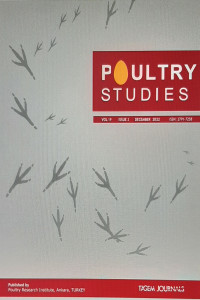Abstract
Abstract
In this study, sexual dimorphism in pigeons was investigated. Rensch's rule was evaluated across pigeon breeds. Body weight, body length, beak length, wingspan, tail length, and tarsus length were used for the analysis. We have divided the breeds in the five groups (form, frills and owls, tumbler and rollers, homer and highflyer, feral). The allometric relation in the traits between female and male measures were analyzed. The measure of sexual size dimorphism was measured for each trait as a simple male size divided by female size (Sexual Size Index, SSI). On average across traits, male birds have higher values than female birds, both across breed groups and overall. No deviation from isometric allometry can be observed except the tail length. No trends towards logarithmic female values according to the SSI could be identified. According to the results, the rules of Rensch for pigeon breeds are rejected. Sexual dimorphism exists between breeds and traits, mainly in favor of the male birds. In most cases, allometric relationships between breeds change, as do traits.
Details
| Primary Language | English |
|---|---|
| Subjects | Zootechny (Other) |
| Journal Section | Poultry Studies 19 (2) |
| Authors | |
| Publication Date | December 30, 2022 |
| Published in Issue | Year 2022 Volume: 19 Issue: 2 |
Cite
Cited By
Individual Identification and Assessment of Genetic Diversity Using Microsatellite Markers in Racing Pigeons Raised in Turkiye
Journal of Research in Veterinary Medicine
https://doi.org/10.30782/jrvm.1468165
204x63

This work is licensed under Creative Commons Attribution 4.0 International License
Print ISSN:1302-3209 - Online ISSN:2147-9003
Journal of Poultry Research is indexed by the following national and international scientific indexing services


